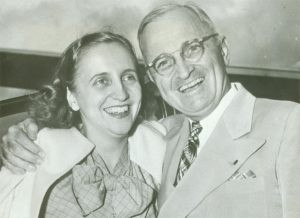On March 16, 1963, a song about an imaginary dragon and a little boy gently sailed onto the Billboard charts, eventually reaching number 2. That song was “Puff, the Magic Dragon,” a tune that has enchanted generations with its seemingly simple melody and evocative lyrics. While often perceived as a children’s song, “Puff the Magic Dragon” carries a deeper, more nuanced story, one that resonates with adults just as much as children. Let’s explore the origins, the true meaning, and the lasting legacy of this iconic folk song.
The genesis of “Puff the Magic Dragon” dates back to 1959 when Leonard Lipton, then a 19-year-old student at Cornell University, penned a poem inspired by Ogden Nash’s whimsical verse, “The Tale of Custard the Dragon.” Nash’s poem, published in 1936, recounts the story of a “realio, trulio little pet dragon,” and this playful imagery sparked Lipton’s imagination. Years later, Peter Yarrow of Peter, Paul and Mary fame, discovered Lipton’s poem and set it to music. Released as a single on January 15, 1963, by the folk trio Peter, Paul and Mary, “Puff, the Magic Dragon song” quickly captured hearts and climbed the charts, marking its first Billboard appearance on March 16th.
 Giovanni Battista Pergolesi (1710-1726)
Giovanni Battista Pergolesi (1710-1726)
The lyrics paint a vivid picture of Puff, the magic dragon, living in the fantastical land of Honalee by the sea, and his friendship with a child named Jackie Paper. They frolic together, adventures abound, and their bond seems unbreakable. However, the song takes a poignant turn as Jackie grows older and his interests shift. “Puff, the magic dragon song” subtly narrates the bittersweet transition from childhood to adolescence. Jackie’s departure from Honalee represents the inevitable loss of childhood innocence and the fading of imaginary worlds as reality beckons. Puff, heartbroken by the departure of his friend, retreats into his cave, symbolizing the retreat of imagination as adulthood approaches. This theme of lost innocence is a powerful and universal one, echoing in other works like Pixar’s “Toy Story 3,” where a child’s growing up necessitates letting go of beloved toys, representing imaginary companions.
 Margaret Truman and her father, President Harry S. Truman, in 1947
Margaret Truman and her father, President Harry S. Truman, in 1947
Despite its clear narrative about growing up, “Puff, the Magic Dragon song” became embroiled in controversy in the 1960s when a Newsweek article suggested hidden drug references in popular music. “Puff, the Magic Dragon” was singled out as a prime example, accused of subtly promoting marijuana use to children. Suddenly, innocent lyrics were reinterpreted through a drug-fueled lens. “Puffing” became synonymous with smoking marijuana, “Jackie Paper” was seen as a reference to rolling papers, “by the sea” morphed into “by the C” for cocaine, “autumn mists” symbolized marijuana smoke, and even “Honalee” was linked to Hanalei in Hawaii, known for potent cannabis.
 Ernst Lecher Bacon (1898-1990)
Ernst Lecher Bacon (1898-1990)
The accusations baffled the creators of “Puff, the Magic Dragon song.” Leonard Lipton vehemently denied any drug connotations, stating, “[Puff is about the] loss of innocence and having to face an adult world. It’s surely not about drugs… at Cornell in 1959, no one smoked grass.” Peter Yarrow echoed this sentiment, asserting, “As the principal writer of the song, I can assure you it’s a song about innocence lost… When Puff* was written, I was too innocent to know about drugs.” Mary Travers, with similar exasperation, simply stated, “Peter wrote the song, and it is not about marijuana. Believe me, if he wanted to write a song about marijuana, he would have written a song about marijuana.”
 Puff and Jackie
Puff and Jackie
The enduring appeal of “Puff, the Magic Dragon song” lies in its simplicity and its profound message. It taps into universal experiences of childhood, imagination, and the inevitable passage of time. For children, it’s a charming tale of a friendly dragon; for adults, it evokes nostalgia for simpler times and reflects on the bittersweet process of growing up. “Puff, the Magic Dragon” remains a beloved classic not because of unfounded drug rumors, but because it beautifully captures the poignant transition from childhood wonder to adult reality. It’s a testament to the power of music to explore complex emotions within seemingly simple melodies and lyrics, securing its place in folk music history and the hearts of listeners for generations to come.
 Peter (Yarrow; right), Paul (Stookey; left) & Mary (Travers; center) in 1965
Peter (Yarrow; right), Paul (Stookey; left) & Mary (Travers; center) in 1965
In conclusion, “Puff, the Magic Dragon song” is far more than just a children’s tune. It’s a story about growing up, the loss of innocence, and the enduring power of imagination. While drug interpretations have clouded its legacy for some, the true heart of “Puff, the Magic Dragon” remains in its gentle exploration of universal human experiences, ensuring its continued relevance and appeal as a timeless piece of music.

